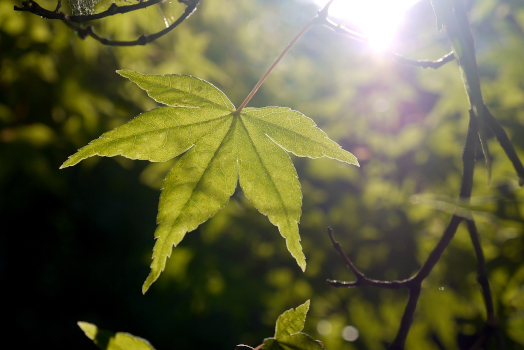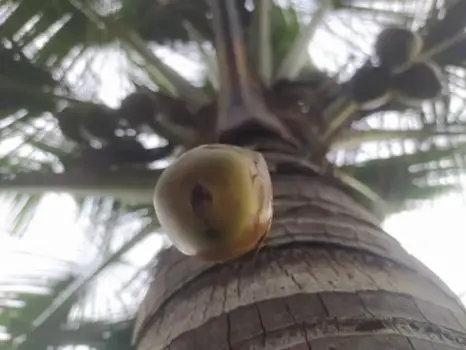The first law of thermodynamics is a statement derived from the law of conservation of energy, which states that energy cannot be created or destroyed; it can only be transferred or transformed from one form to another. This means that in a closed system, the total energy remains constant, although it can be converted from one form to another.
Examples
Photosynthesis

During photosynthesis, plants convert light energy into chemical energy by using the energy from sunlight to convert carbon dioxide and water into glucose and oxygen. This process is an example of the first law of thermodynamics, which states that the total amount of energy before and after the conversion remains constant.
Light bulb

When an electric current passes through the filament of a light bulb, it causes the filament to heat up and emit light. This is an example of the conversion of electrical energy to light energy, and the first law of thermodynamics ensures that the total amount of energy before and after the conversion remains the same.
Hand rubbing

Rubbing our hands together generates heat due to friction, which is an example of the conversion of mechanical energy to heat energy. The first law of thermodynamics ensures that the total amount of energy before and after the conversion remains constant.
Falling stone

When a stone falls from the edge of a hill, it gains kinetic energy due to its motion, which is an example of the conversion of potential energy to kinetic energy. The first law of thermodynamics applies here, as the total amount of energy remains constant throughout the conversion.
Burning wood

Burning dry wood releases stored chemical energy and converts it into heat energy. This is an example of the conversion of chemical energy to heat energy, and the first law of thermodynamics ensures that the total amount of energy before and after the conversion remains constant.
Braking bicycle

When brakes are applied to a moving bicycle, the mechanical energy is converted into heat energy due to the friction between the brake pads and the wheel. This is an example of the conversion of mechanical energy to heat energy, and the first law of thermodynamics states that the total amount of energy remains constant throughout the conversion.
Loudspeaker

The conversion of electrical energy to sound energy occurs when a loudspeaker is turned on. The electrical energy is used to power the speaker, which vibrates rapidly to produce sound waves. The total amount of energy before and after the conversion remains constant due to the first law of thermodynamics.
Pushing a book

Pushing a book with the hand is an example of the conversion of potential energy to kinetic energy. As the book is pushed, it gains kinetic energy due to its motion. The first law of thermodynamics applies here, as the total amount of energy remains constant throughout the conversion.
Microwave oven

Turning on a microwave oven results in the conversion of electrical energy to heat energy. The electrical energy is used to power the magnetron, which produces microwaves that heat up the food inside the oven. The first law of thermodynamics ensures that the total amount of energy before and after the conversion remains constant.
Falling coconut

When a coconut falls from a tree branch, its potential energy is converted into kinetic energy due to its motion. This is an example of the conversion of potential energy to kinetic energy, and the first law of thermodynamics applies here, as the total amount of energy remains constant throughout the conversion.
Related
- Boyle’s law examples
- Charles law examples
- Gay-Lussac’s law examples
- First law of thermodynamics examples
- Second law of thermodynamics examples
Image credit
- The stock photos used in this post are sourced from platforms like Pexels, Pixabay, Canva, etc. Due to the age of the images, their specific origins remain unknown.
External links
- First Law of Thermodynamics – an overview – ScienceDirect
- The First Law of Thermodynamics | Physics – Lumen Learning
- First Law of Thermodynamics: Statement, Equation, & Examples – Chemistry Learner
- What is the first law of thermodynamics? – Khan Academy
- First Law of Thermodynamics | Definition, Formula & Examples – Video & Lesson Transcript – Study.com
- First Law of Thermodynamics – NASA (.gov)
- What Are Some Everyday Examples of the First & Second Laws of Thermodynamics? – Education – Seattle PI
- 12.2 First law of Thermodynamics: Thermal Energy and Work – Texas Gateway
- What is the first law of thermodynamics? – Live Science
- First Law of Thermodynamics: Formula, Example & Equation – Vaia
- 108. 15.1 The First Law of Thermodynamics – University of lowa Pressbooks
- First law of thermodynamics – Wikipedia
- The first law of thermodynamics – Energy, Heat, Work – Britannica
- First Law of Thermodynamics: Definition & Example – Sciencing
- What is a real-world example of the 1st law of thermodynamics? – Quora
- What Is The First Law Of Thermodynamics? – Science ABC
- What is first law of thermodynamics? + Example – Socratic
- First law of thermodynamics in our day to day life? – ResearchGate
Deep
Learnool.com was founded by Deep Rana, who is a mechanical engineer by profession and a blogger by passion. He has a good conceptual knowledge on different educational topics and he provides the same on this website. He loves to learn something new everyday and believes that the best utilization of free time is developing a new skill.
